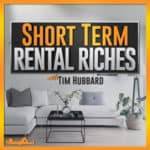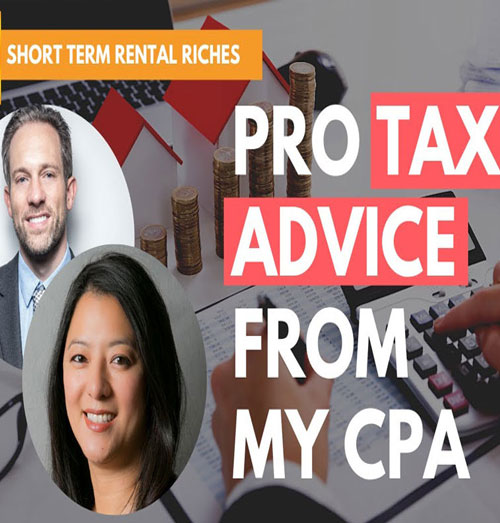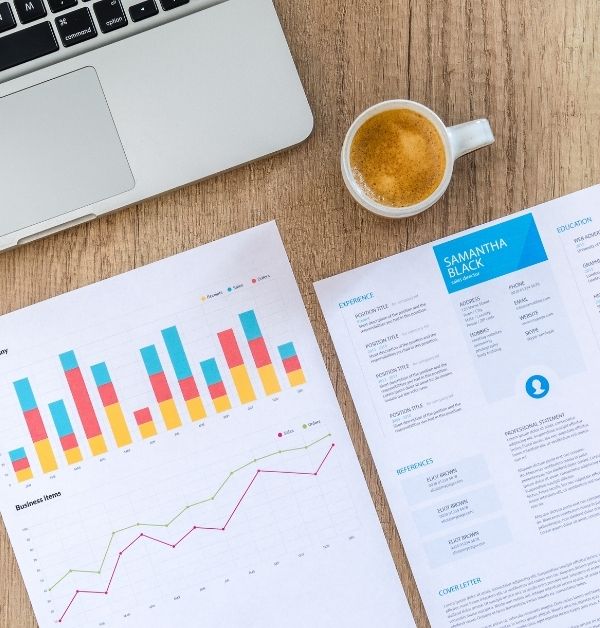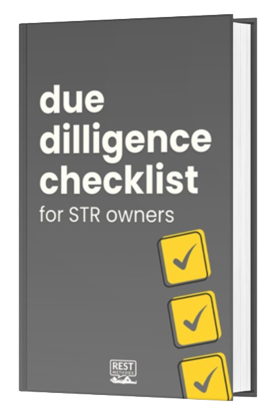Explore Active Listings: Is your Pricing Strategy still Relevant to assess your pricing approach and ensure it meets current market demands and trends!
Today, we’re diving deep into a topic that’s crucial for every investor: analyzing the supply and demand in your market. Whether you already own a property or are thinking about diving into a new market, understanding this dynamic can significantly impact your pricing strategy and overall investment returns.
In the fast-evolving short-term rental market, staying ahead means not just keeping up with current trends but also anticipating future changes. With platforms like Airbnb and VRBO expanding rapidly, the number of listings can fluctuate significantly, affecting both availability and pricing. Today, we’ll explore practical, easy-to-implement strategies to gauge the supply and demand in any market. This knowledge will not only help you position your property more competitively but will also guide you in making informed investment decisions that could lead to better financial outcomes.
In this episode, you’ll learn:
- Utilize Industry Tools
- Understanding Market Dashboards
- Creating a Competitive Set
- Interpreting Data Correctly
- Adapting to Market Changes
Remember, having a clear grasp of these elements can dramatically enhance your ability to set competitive prices and maximize your earnings. Be sure to implement these strategies to stay ahead of the curve in the bustling world of short-term rentals. For more tips and tricks on building a thriving rental business, don’t forget to visit our website at strriches.com and check out our past episodes. Keep investing smart and remember, knowledge is the key to success!
Need help managing your short-term rental and you don’t want to go it alone? Shoot us a message here and we’ll see if we can help.
Are you enjoying the podcast? Please subscribe, leave a rating and a review, and share it! This helps us reach others that may find the info helpful as well.
You can find all of our links here including our website, recommended resources, upcoming live event, short-term rental playbook, Instagram, and more!
Click Here to view TranscriptWell, it’s no big surprise that a lot of short-term rentals have made their way into the market over the last few years.
There’s way more Airbnbs than there ever were.
But how many exactly are there?
I want to talk this week about how you can find out exactly how many are in your market if you already have a property, so you can make sure your pricing strategy is correct.
Or if you’re looking to invest in a new market, how you can go about determining whether it’s over supplied or not.
Stay tuned.
Welcome to Short Term Rental Riches.
We’ll discuss investing in real estate, but with a specific focus on short-term rentals.
Quick, actionable items to acquire, manage, and scale your portfolio.
I’m your host, Tim Hubbard.
Welcome back to the Short Term Rental Riches podcast.
I’m really happy you’re here again.
So supply is fundamental to our analysis with any investment, right?
We have supply and we have demand, and we always wanna have more demand than we do supply.
It hasn’t always been really easy to find out how much supply is actually in our market, but it is now.
So I wanna talk about two ways where you can find it and to sort of understand it a little bit more.
Anyone can do this, I promise, it’s really easy.
But before we do that, I just wanna remind you that we’ve talked about a lot on this podcast already.
If you’re just joining us for the first time, you can find all of our prior episodes at strriches.com, as well as tons of free eBooks, all kinds of downloads and freebies, stuff that we’ve used to manage tens of thousands of guests in my properties and in the properties we’re managing for others.
So we did talk specifically about supply and six reasons why supply might be going up in your market.
That’s episode number 220.
And then we also talked about the other side of that, why demand might be increasing in your market, which is a good thing.
And that is in episode 215.
So go back and check those out if you haven’t already.
This week, we’re talking about where to find those actual numbers and how to make sense of them.
Okay, so first things first, where do we find the amount of active listings in our market, in our sub-market, in our zip code?
We’re gonna get into the nitty gritties here.
The first one, and this is no surprise if you’ve been tuning in for a while, is on pricelabs.co.
That’s what my team and I use to manage all of our properties and our portfolio for our pricing.
There’s a ton of good data.
So that is one place where you can definitely find it.
I’m gonna let you know exactly how here in a quick second.
But before I do, a lot of you have heard of AirDNA.
And AirDNA also has this information, although the subscription is a little bit more expensive.
And as far as I can tell, it’s not as accurate as Pricelabs.
So you can now get access to AirDNA on a monthly basis.
So if you’re exploring some markets, this is a good place to start.
As little as $40 per month, or they have much lower monthly fees if you sign up for a year.
That’s at the time of this recording.
Of course, if you’re just doing market research, you don’t need an annual subscription.
So just keep that in mind.
They do have the number of active listings on there, but we’re gonna jump into Pricelabs because in my experience, this is much more accurate.
Okay, so hopefully you have a Pricelabs account already.
If you don’t, it’s super easy to integrate.
You just go to pricelabs.co.
You can link directly with the Airbnb listing, and it’s not an expensive subscription.
It’s well worth the money.
They have so many features.
You may be using another tool like Beyond Pricing or Wheelhouse, and if you are, the things that we’re gonna talk about in here should apply to those as well, although you might be going to a slightly different spot in those tools to find this data.
So once you’ve got a Pricelabs account, you’re going to need to subscribe to one other thing, and that is a market dashboard, an extra $10 a month at the time of this recording, and that’s where we’re gonna find our data on active listings.
So there’s two ways to look at active listings.
One is just looking at the market in general.
That gives us a good 10,000 foot view of what’s going on in this market.
We know with our properties, however, we can’t just look at averages.
We can’t compare our three bedroom to a five bedroom or to a studio, that just doesn’t make sense, right?
The supply and demand for each size property is different.
So how do we go about comparing apples with apples?
Well, we need to create a comp set.
And so of course, if we have a five bedroom, we want to compare other five bedroom properties in our market.
We want to make sure they’re in the right zip code.
We want to make sure we have the right amenities.
We’ve talked about creating comp sets before, so head over to strriches.com to check out our prior episodes on that, if you need help adjusting that.
Let’s assume you already have that comp set.
Well, you’re simply going to apply this in the market dashboard.
So hopefully I’m not losing you here.
There are a few steps.
I’m going to recap them, but either way, even if I’m losing you, this is gonna help us understand exactly what we need to know in terms of supply and demand.
So let’s assume we’re comparing apples to apples.
Well, we can simply just go to our market dashboard and we can see the amount of active listings, but we can’t stop there, right?
The first thing is, what is an active listing?
Well, that’s a listing that got booked sometime in the last year.
So obviously, we don’t wanna compare a property that got booked one time in the last year to our property that’s available all year, maybe had 100 reservations.
So again, we can filter this out in our comp set.
There is a setting there that talks about active nights listed.
I like to scroll to at least 250 days actively listed, but preferably all year long, right?
And so this depends on your property, depends on the seasonality.
Remember, Price Labs doesn’t know if an owner is blocking the property.
They just assume all blocks are occupancy and reservations.
And so some of these more seasonal places where you have owners staying in their properties, maybe blocking for three months, maybe in those situations, the average active nights is a little less.
But just to make it simple, you want to compare properties that are active throughout the year.
Okay, so we got our comp set up, and we can simply just look at this metric right under the market dashboards.
It says active listings, and we know that it’s comparing apples to apples.
So let’s say it says 15% increase.
Is that good or is that bad?
Let’s dig a little bit deeper.
First of all, you can scroll down a little bit.
There’s going to be a show hide graph button, and then that will allow you to go back and look further in the past.
So that metric right at the top is just telling you year over year, but you want to go back two years, three years.
So you can do this.
You simply just scroll over the graph, and you could see, oh, in 2022, there were 105 bedroom properties in this exact comp set.
So in this same area, similar properties of mine, there were 120, 22, and now there are 150.
Is that a bad thing or not?
Well, the supply has definitely increased, but we can pull up one other easy little metric to let us know if there’s still a lot of opportunity in this market, and if we can still charge great prices.
And that other metric is RevPAR.
And yes, we’ve talked about this before, but if you’re new, it’s essentially the occupancy multiplied by the average daily rate.
So let’s say our listings increased by 15%, but our RevPAR increased by 20%.
That’s great news, right?
That means that this market is sustaining that new supply, that more properties have been added, but all the properties in the market on average are still earning more than they were before.
That’s great news.
And so we can simply just look at these two things.
We can look at the increase in supply or the decrease compared to our exact type of property.
Remember, we wanna compare apples to apples.
Year over year, we can take that percentage increase or decrease, and we can compare it against the difference in RevPAR for those same timeframes.
I know that sounds a little complicated.
Pause this episode, go back and review it, pull up your market dashboard and price labs.
It’s not that complicated.
I promise you, it really only takes you a few minutes.
And it’s really good to know, because if you’re trying to charge prices from last year, but your supply increased 20% and the amount that you can charge didn’t change at all, that means you have to fight harder to get booked and to get booked at great rates.
Remember, if the average occupancy in a market, let’s say that has 100 properties, is 50%.
If that’s the average occupancy year round, let’s just say that means that 50 properties out of 100 are getting booked on average, right?
And so there’s obviously a lot more competition there than a market that has 75% average occupancy rates.
So here’s a quick little case study analysis.
We just brought on a new partner.
Shout out to you, Scott and Lori.
Beautiful property in Utah, six bedrooms, and there’s not a lot of six bedroom properties in this area.
In fact, there were only five back in 2022.
And now, in our comp set, there are 14.
So if you look at those numbers, that’s actually 180% increase.
That might sound like a lot, right?
But we gotta remember, the popularity with short term rentals has also grown.
And so people are discovering it, and people are using it more than they were in the past.
So I would say, depends on the market, of course, but you should expect an average increase in supply just year over year, because more people are staying in short term rentals.
So of course, if we don’t have any other information, we don’t know if this is negatively affecting us or not.
180% increase sounds like a lot.
So we go back to that RevPAR calculation.
Remember, that’s the occupancy and the average revenue for that same period of time.
And we can see that the average RevPAR increased 23%.
That is great news for us.
That’s great news for Scott and Lori.
That means that the market is not over supplied, right?
Because we were able to more than double listings in that market, double the amount of options that people have to book.
But at the same time, each of those properties on average was able to earn a little more and have a little higher occupancy.
So of course, not all properties are created equal.
There’s so many things that make them different.
The way you manage them, your reviews, all of those things have a huge, huge impact.
Two properties can be very similar, but operate very differently.
So hopefully that gave you a little bit of insight.
Again, if you haven’t checked how many active listings are in your market recently, I highly suggest that you do it because you might still be trying to charge prices from a year or two years ago or something similar without really knowing if you can.
And knowing our active listings and knowing if the market is allowing for them or if the market is oversupplied, that is crucial to our whole strategy.
Again, you can find all of our prior content, strriches.com.
We talk about pricing a lot.
I hope I didn’t lose any of you out there.
And I hope all of you that have a property already are already using a tool, a dynamic pricing tool like Pricelabs.
If you’re still looking for your first property, well, then this will be essential in your analysis to determine if adding one more listing in that market is going to be profitable for you.
Until next time, I hope you have a fabulous week.
If you’ve been listening to the podcast for a while, then you know that I’ve been managing my properties virtually for years and years.
My team and I have managed thousands of guests.
We’ve learned a ton, and I’m really happy with the progress and the growth we’ve made.
In fact, we’re now big enough to help manage your properties as well.
Our team has a ton of experience from the inner city apartment to the large lakeside retreat.
We’ve worked with all types of properties across the nation.
We’ll help to take the management workload off your plate while earning top revenue and excellent guest reviews, all while charging an industry low fee.
If you’d like to find out if your property fits with our program, just head to strriches.com.
There you’ll see a property management button.
Again, that’s strriches.com.
Just click on the property management button, and we look forward to chatting with you soon.















